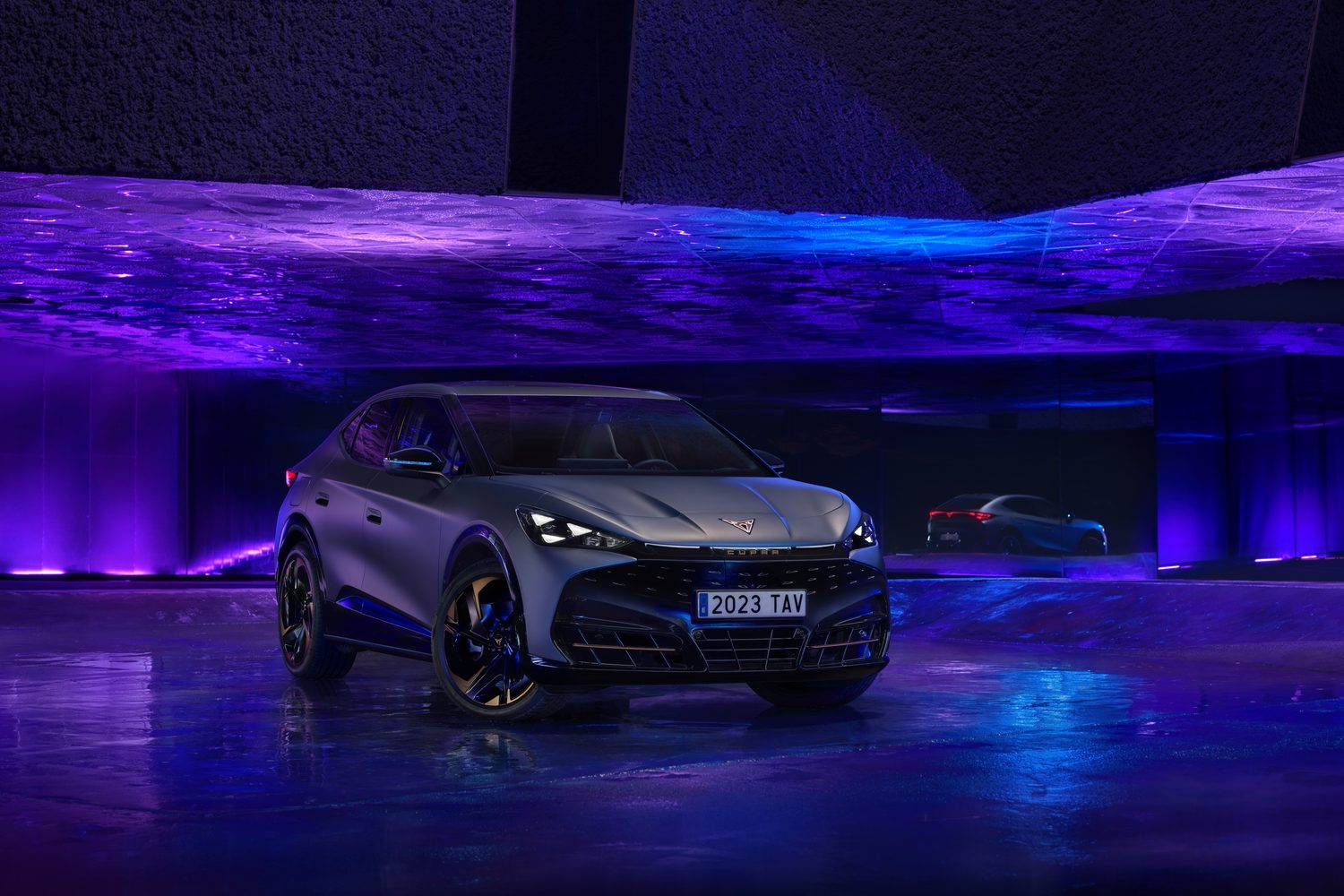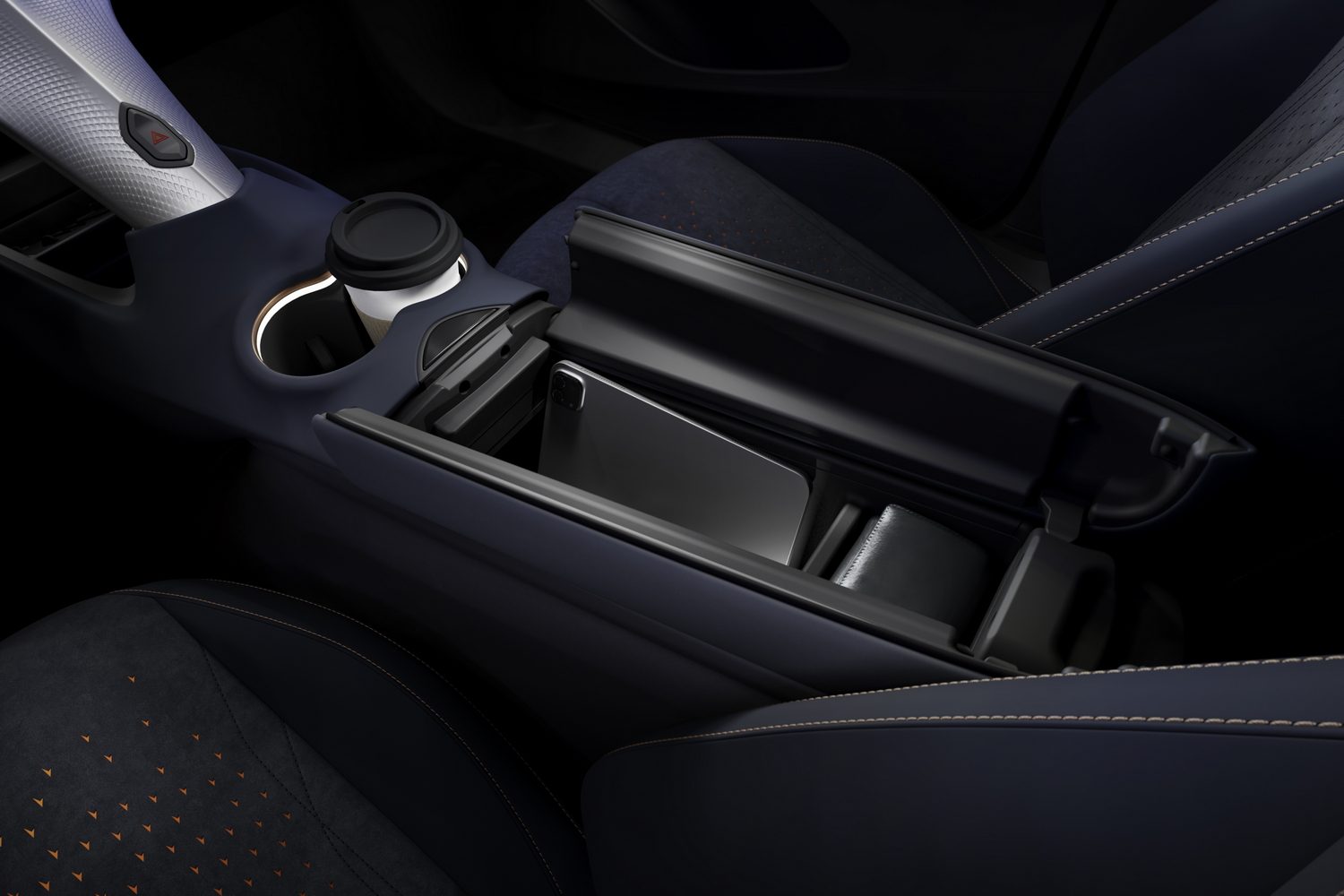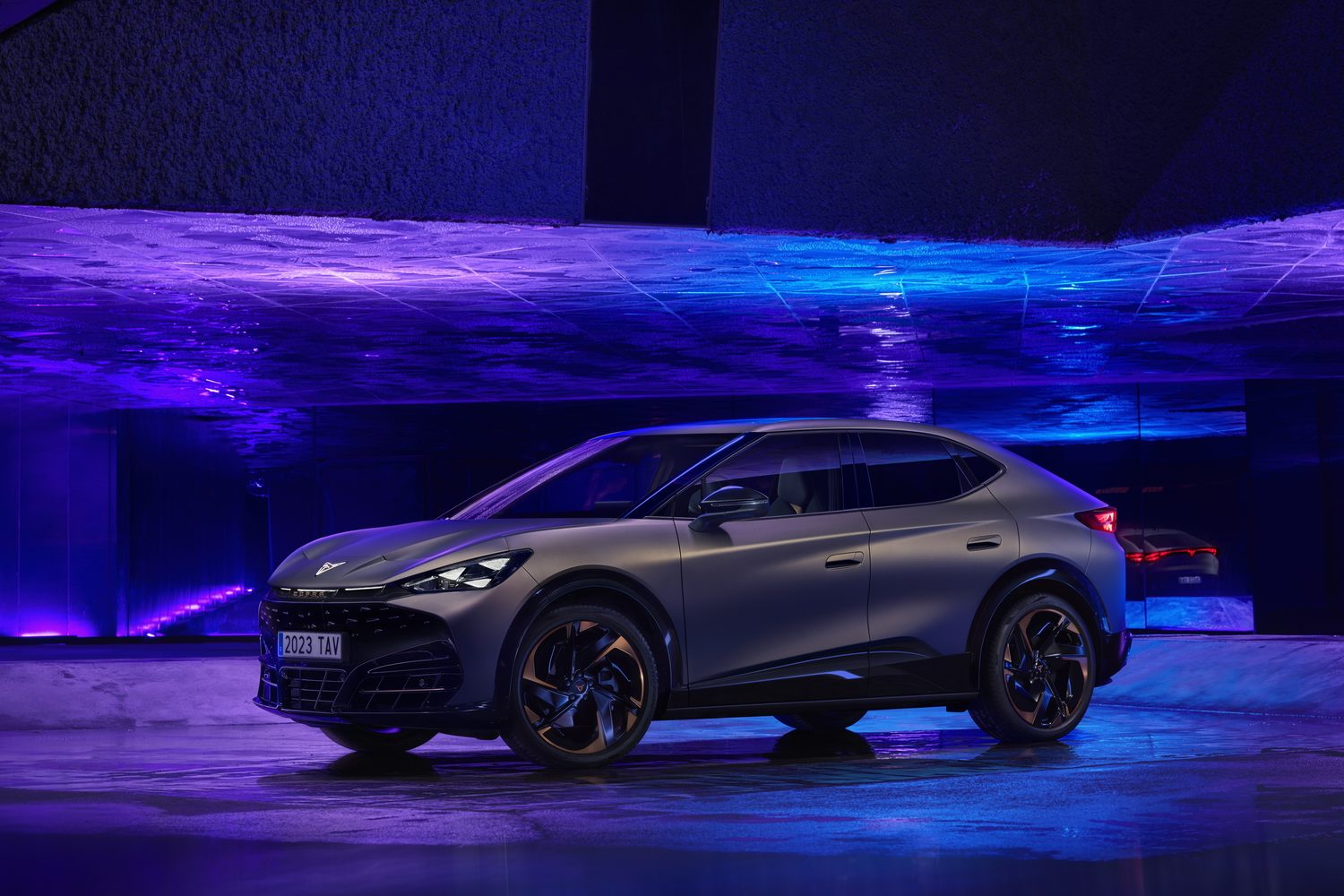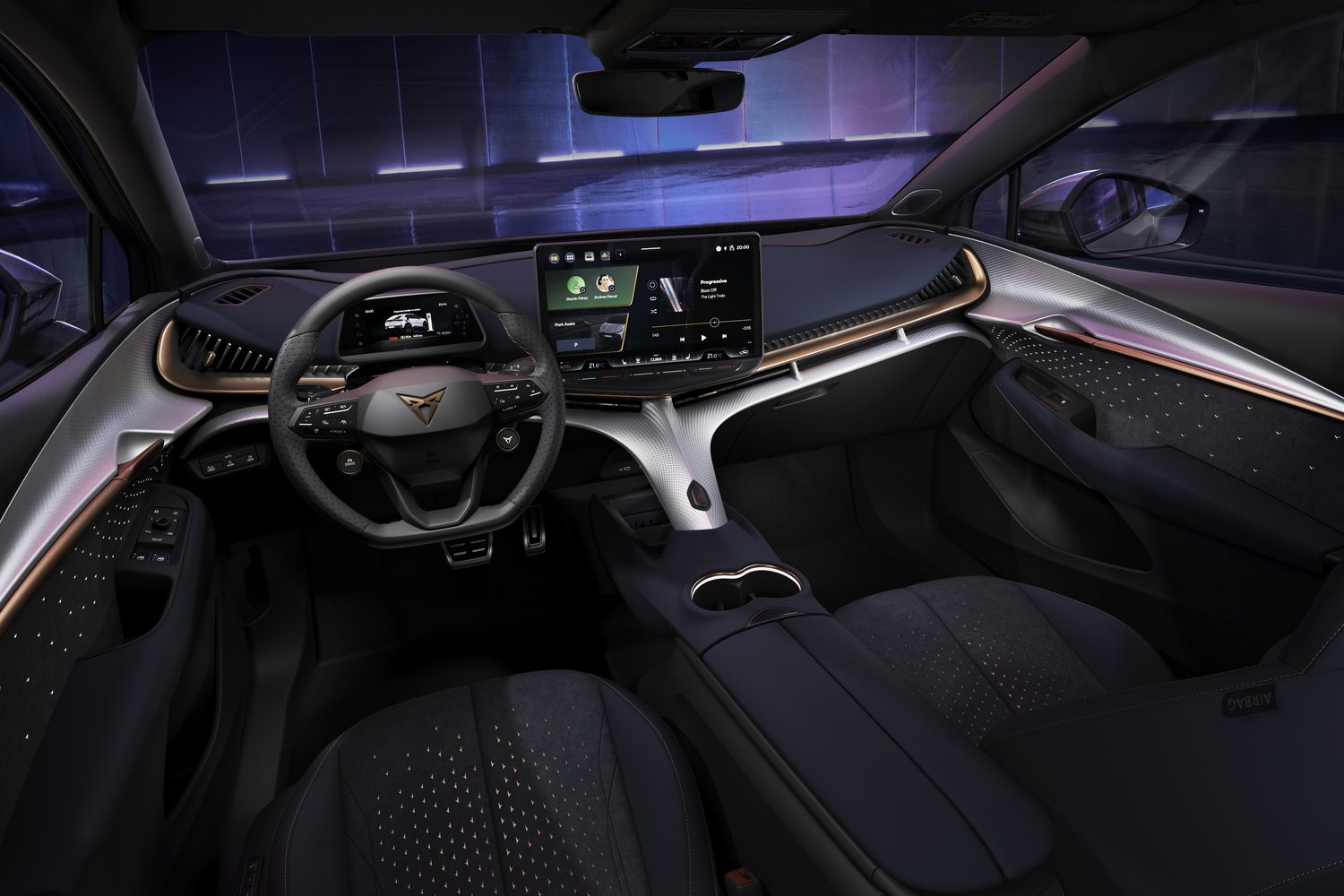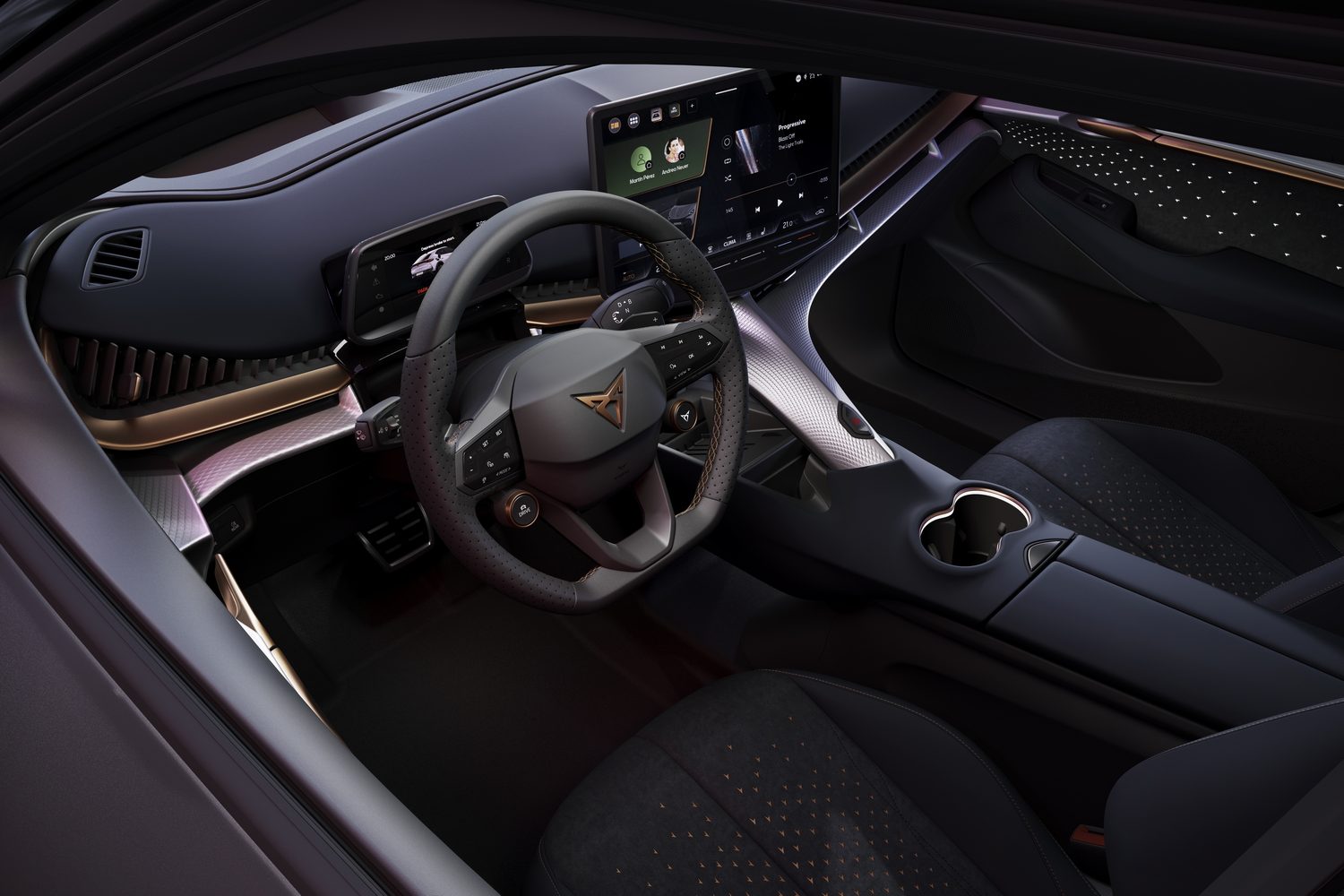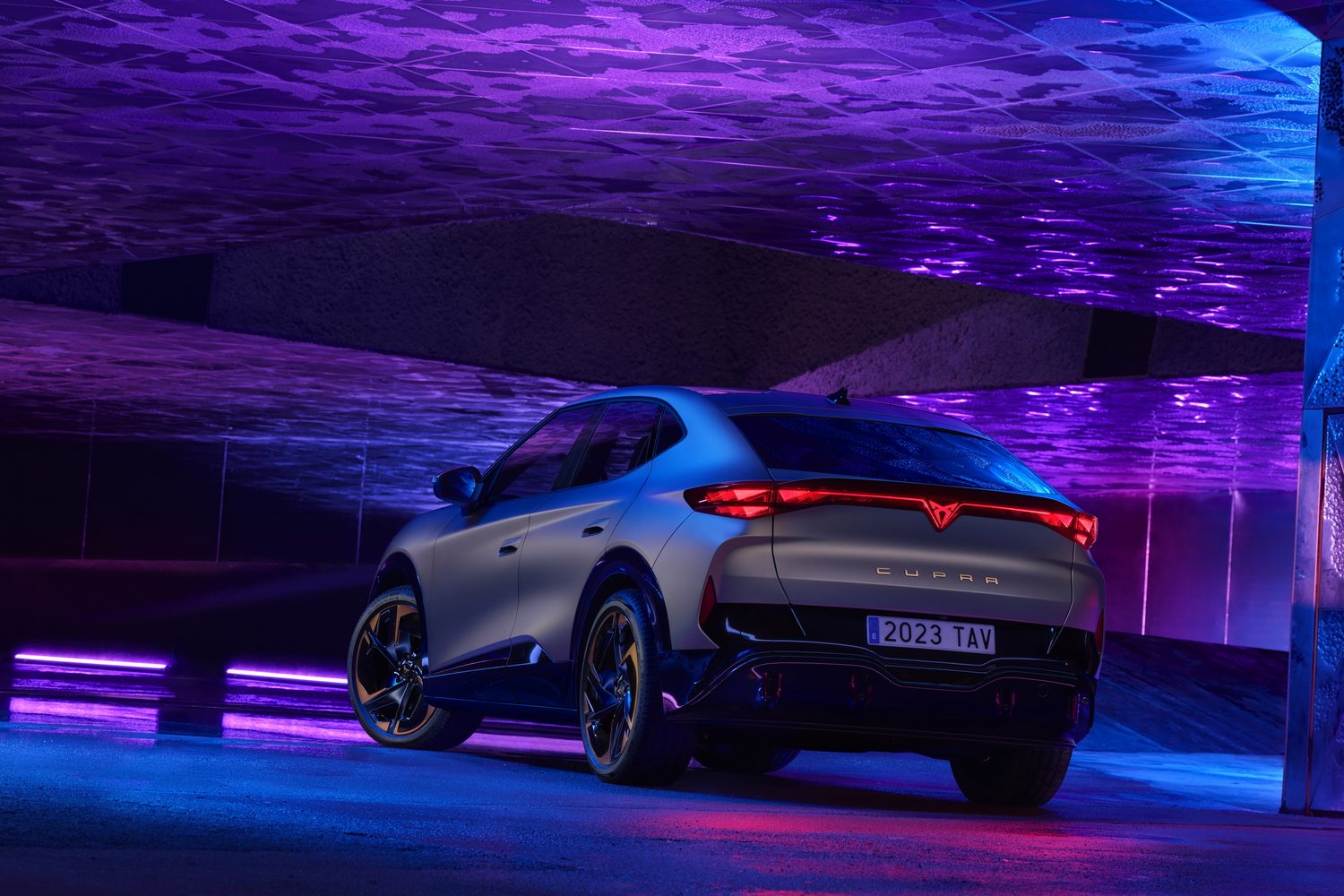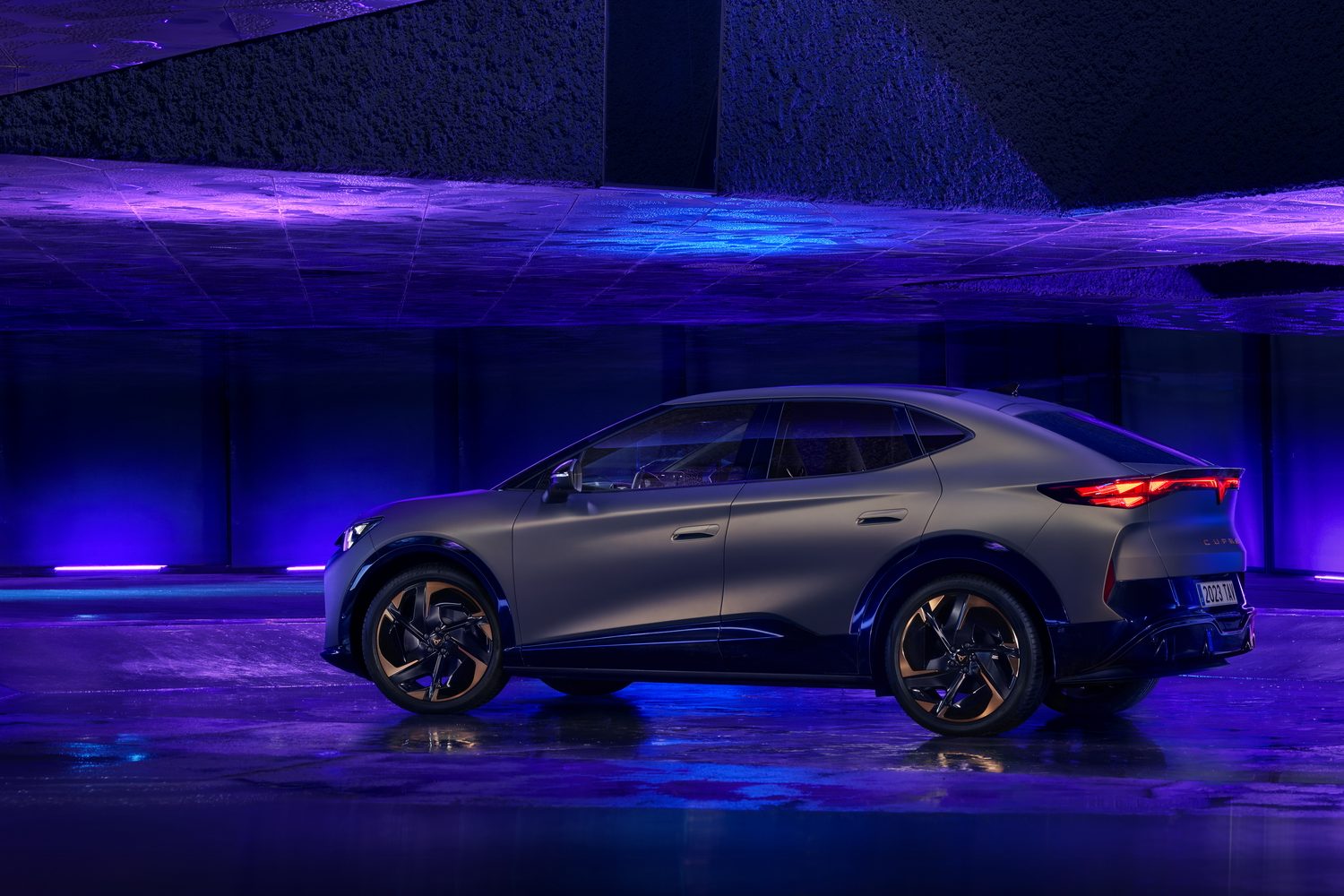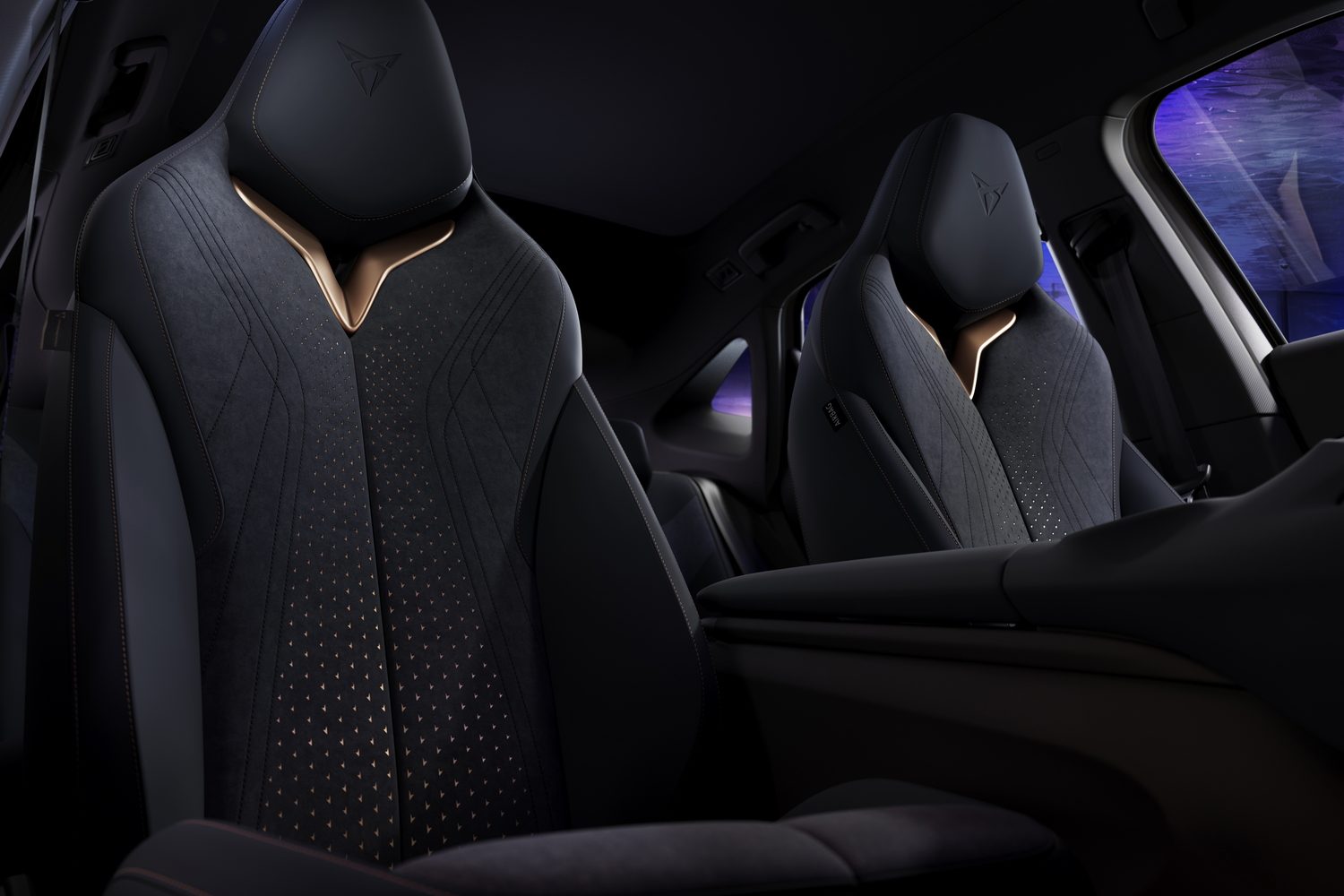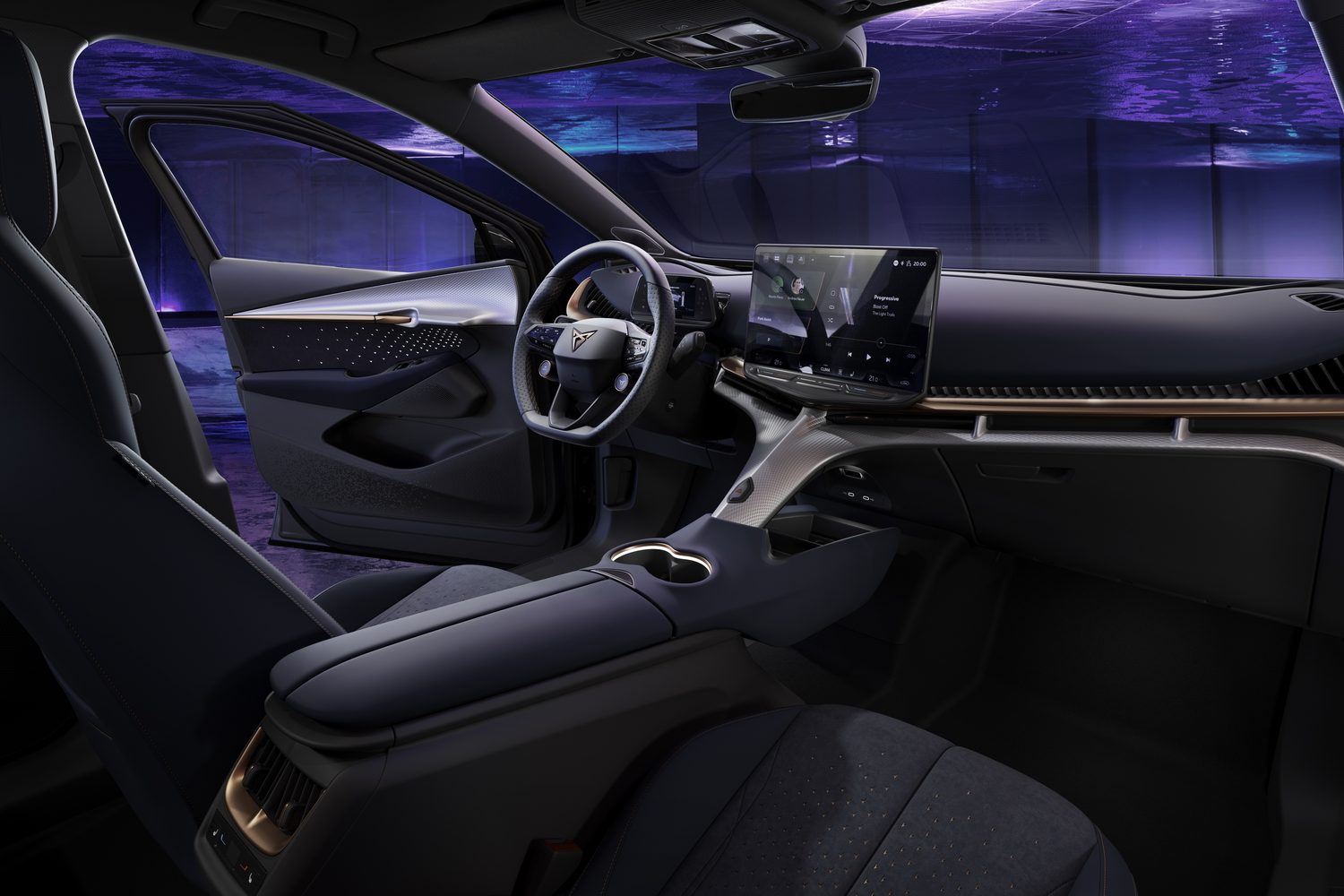Cupra has launched its second electric car, following the Born hatchback with the new Tavascan coupe-SUV. Remaining largely faithful to the concept car revealed in 2019, the Tavascan is based on much the same underpinnings as the Skoda Enyaq and Volkswagen ID.4.
"Helmet" design concept
Perhaps inspired by Cupra's angular logo, the Tavascan has a sharp, distinctive nose design that's an evolution of the Born's front end. It isn't just a stylistic design, either, with aerodynamic features such as the lines that flow into the lower air intakes channelling the air to cool the car. But the design is laced with small details, too, including the three-triangle 'eye' signature in the headlights and the illuminated Cupra logo on the bonnet.
Further back, the glasshouse is designed around a "helmet" concept that uses a polished black A-pillar to 'connect' the windscreen and side windows creating a visor-like design, while the wheels - offered in 19-, 20- and 21-inch designs - have aerodynamic covers to reduce turbulence and improve efficiency.
Finally, the rear end continues the three-triangle design seen in the front lights, while there's another illuminated Cupra logo and a rear diffuser, which is designed to make the car look wider.
By and large, Cupra has continued its penchant for moody, modern paint colours, with Tavascan customers offered a choice of Tavascan Blue, White Silver, Atacama Desert, Urano Grey and Century Bronze Matt. However, Cupra is also offering a metallic Hypernova Red, which adds a little more colour to proceedings.
Sustainable materials
Cupra says it has tried to reflect the "sculpted lines" of the exterior in the cabin, and the design is definitely a little bit different. The whole dashboard is supported by an element that connects the centre console with the main body of the dashboard, which houses the two-screen infotainment system. For the driver, there's a 5.3-inch digital instrument cluster, which works in collaboration with the main 15-inch touchscreen that dominates the dashboard.
In keeping with the zero-emission powertrain, Cupra has upholstered the cabin with a selection of sustainable materials. There's a straight choice between textile upholstery with 90 per cent recycled polyester, or microfibre with 50 per cent recycled material.
Speaking of seats, Cupra has fitted the Tavascan with sporty bucket seats as standard, but 'CUP' bucket seats will also be available later on. The sculptural seating uses a lightweight design designed to make the seats look more elegant without reducing support for the occupants.
But comfort is about more than just seats, so Cupra says it has "optimised" space in the front and rear, as well as providing "smart" storage solutions. Chief among these is the 540-litre boot, which is roughly the same size as that of the Volkswagen ID.5 coupe-SUV.
Widgets. Widgets everywhere...
The highlight of the cabin really has to be the Tavascan's 15-inch central display, which works with an illuminated touch bar (it seems the Volkswagen Group has learned from the mistakes of the ID.3 and Golf) for volume and climate control.
As usual, the touchscreen features a selection of widgets, allowing drivers and passengers to access functions and features with a single touch of the display. The main home screen houses three such widgets, and these can be configured to suit the individual's requirements for streamlined use. Drivers can even customise the size of the widgets, allowing different information to be prioritised. The screen houses other features, too, including wireless Apple CarPlay and Android Auto, as well as a new sound system developed in collaboration with Sennheiser.
And the screen works with the Cupra Connect technology and the Cupra app, with three years of free access for customers after they take delivery of the vehicle. The system allows instant access to online services such as traffic information and online route calculations, as well as offering customers the chance to take control of pre-heating the car and charging the battery remotely.
Above the instrument display, meanwhile, is the augmented reality head-up display, which is essentially taken from other electric Volkswagen Group cars and can project information onto the windscreen. Information such as driver assistance indicators, speed and navigation directions all seem to sit in the real world - at least to the driver's eyes.
VZ vs Endurance
The Tavascan will be offered with a choice of two powertrains, both of which are powered by a 77kWh battery and come with a 286hp rear-mounted electric motor. The base model - the Endurance version - uses that motor to drive the rear wheels alone, allowing the car to achieve a target range of 550km on the official efficiency test. However, the high-powered VZ model adds a second, less powerful motor at the front, upping the total output to 340hp, but cutting the range to 520km.
As usual, the 77kWh battery pack is a lithium-ion unit comprising water-cooled, prismatic cell modules. The battery is encased in an aluminium housing that's part of the car's body, helping to increase the stiffness of the bodyshell and keep the weight low down in the vehicle. The battery also has a thermal management system to optimise its temperature.
Other measures to maximise the battery pack's efficiency include an optional heat pump, which heats the car's interior more efficiently to minimise load on the battery. And of course, the Tavascan utilises regenerative braking to recharge the battery slightly when the accelerator pedal is released. The level of braking force applied can be adjusted using the paddles on the steering wheel, with drivers offered a choice of four settings.
135kW fast charging
The Tavascan is also being offered with 135kW DC fast charging technology that allows it to replenish the battery from 10 to 80 per cent in just under half an hour. At maximum charging speed, it'll add 100km of official range in seven minutes, assuming you can find a suitably powerful public charge point to plug into.
Buyers are expected to use home charging more often, though, and Cupra is offering its own domestic 'wallbox' charging units to customers. The Cupra Charger is described as a "plug-and-play" system, while the Cupra Charger Connect offers a wi-fi connection, allowing customers to remotely control when the battery charges. The range-topping Cupra Charger Pro wallbox combines wi-fi technology with 4G connectivity.
To help customers take advantage of that, Tavascan customers can use the Cupra Easy Charging App, which "controls everything related to charging", regardless of the infrastructure the car is plugged into.
Levelling up
Cupra claims to have taken electrification and performance "to the next level" with the Tavascan, and the shared Volkswagen Group platform has been tuned by the Cupra engineers in Martorell.
However, the basic architecture is unchanged, so the Tavascan gets the same MacPherson strut front suspension and multi-link rear suspension set-up as the Enyaq and ID.4, while the battery is positioned centrally between the axles to provide a 49:51 weight distribution front to rear.
In addition, the Tavascan has steering that's lighter at low speed and heavier at high speed - a decision designed to offer extra manoeuvrability around town and more stability at speed. And Cupra is also offering a Dynamic Chassis Control Sport system that allows the driver to tune the Tavascan to the prevailing conditions with the help of some pre-configured drive modes.
Safe as casas
As well as trying to make the Tavascan enjoyable to drive, Cupra has also worked to make the car safer, with a range of on-board technology to help prevent or mitigate accidents. Now-familiar autonomous emergency braking, adaptive cruise control and lane-keeping assistance tech are all in evidence, along with a rear-view camera and exit warning, which alerts occupants if they're about to open a door into the path of an oncoming vehicle.
The Tavascan also comes with Car2X connected car technology, allowing it to communicate with other similarly equipped vehicles and broadcast data surrounding emergency vehicles, accidents and broken-down vehicles, helping other cars plan their journeys.
And the Tavascan gets something called Connected Travel Assist, which works with the adaptive cruise control and the information obtained from the cloud, as well as the lane centring system. As a result, the system can control the car in a single lane of the motorway, adapting speed to suit the situation and keeping the car in its lane. But the new system can also assist drivers when changing lanes on the motorway, further reducing the workload for the driver.
Finally, once parked, the Assisted Parking tech now allows parking manoeuvres to be done remotely using a smartphone. And the Tavascan can do something called Trained Parking, where the driver is "completely assisted" 50 metres ahead of a previously memorised parking space. In short, if you park somewhere often and teach the Tavascan how to do it, it will repeat the manoeuvre all over again.
A vision to reinvent electrification
"The brand's journey towards electrification is its unstoppable impulse - it's at the heart of everything we do," said Wayne Griffiths, the CEO of Cupra. "Cupra is transforming itself towards a fully electrified brand by 2030. There are so many purely rational electric cars coming to the market. That's not what Cupra is about. In 2019, we had a vision to reinvent electrification: we wanted to show with Tavascan that it's not a vehicle responding to change, but a car that creates it. Back then maybe it was only a dream. Now with the Cupra Tavascan, our dream comes true."

